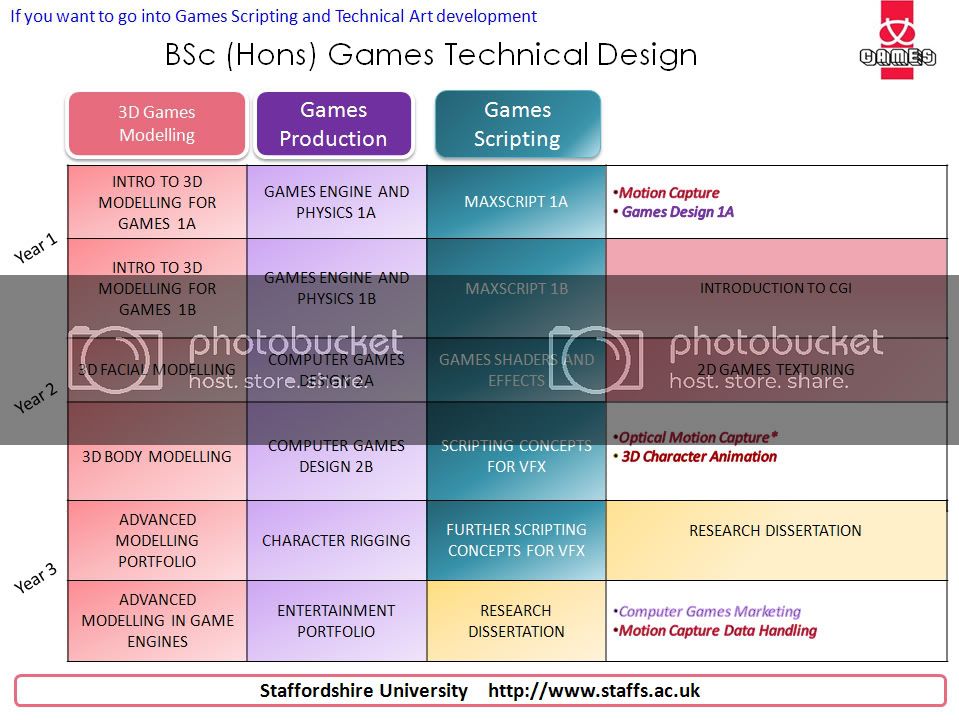Hi All
I thought I Would post an update on the progress of this course.
The focus of the course is now on scripting for 3d Apps, with the game engine scripting elements replaced with Python and MEL Scripting,
There is a focus on modelling in the 1st year with modelling modules in 3ds Max (Games Modelling 1a&1b) and Maya (Introduction to CGI) there is still modules in shader development and Rigging. The student is able to focus their studies in the final year with their research dissertation.
It is intended that the student would work with the year long game development project (games design 2a & 2b) and provide a solution to their problems; either technical development or complex rigging
any feedback would be greatly appreciated. I’ve emailed around a few people but if anyone would like to contact me to discuss this it would be very much appreciated
here is the award breakdown and some more details
Introduction to 3d Modelling for Games 1A & 1B:Introduction to the fundamentals of 3D model creation in 3ds Max, 3d manipulation, uv’s & texturing, rendering and animation using a games specific pipeline. This looks at an introduction to normal maps and texture creation.
Games Engines and Physics 1A&1B: Introduction to the fundamentals of Game Engine architecture: Rendering Engines and pipelines, AI Engines, Physics Engines, building levels and using UEd
Introduction to CGI: Introduction to the fundamentals of modelling in Maya. This module focuses on the fundamentals of the modelling and rendering pipeline for CG and VFX
++MAXScript 1A&1B: This would look at using MAXScript to develop tools and UI to speed up workflows within 3ds Max.
++Scripting Concepts for VFX: This module introduces the fundamental concepts of programming but relates them to practical tasks one may encounter when using a 3D Application ( this is done in python)
++Further Scripting Concepts for VFX: This module builds on the scripting concepts for vfx module, allowing students to create more intricate scripts and approach the applications programming interface (API) allowing interaction between programs. (using MEL script)
Character Rigging: This looks at developing a complete custom biped rig using controllers, constraints and MAXScript UI
++Game Shaders and Effects: This would look at developing the ability to develop custom shaders, looking in depth at UT3 materials and shaders, real time shaders in 3d Application(something like ShaderFX), and possibly writing a simple Shader.
many thanks for your time
Dave Edwards


 I’m sorry if I’m a bit messy. I’m sorry if I’m being a bother:(: but thanks for taking your time!:D:
I’m sorry if I’m a bit messy. I’m sorry if I’m being a bother:(: but thanks for taking your time!:D: